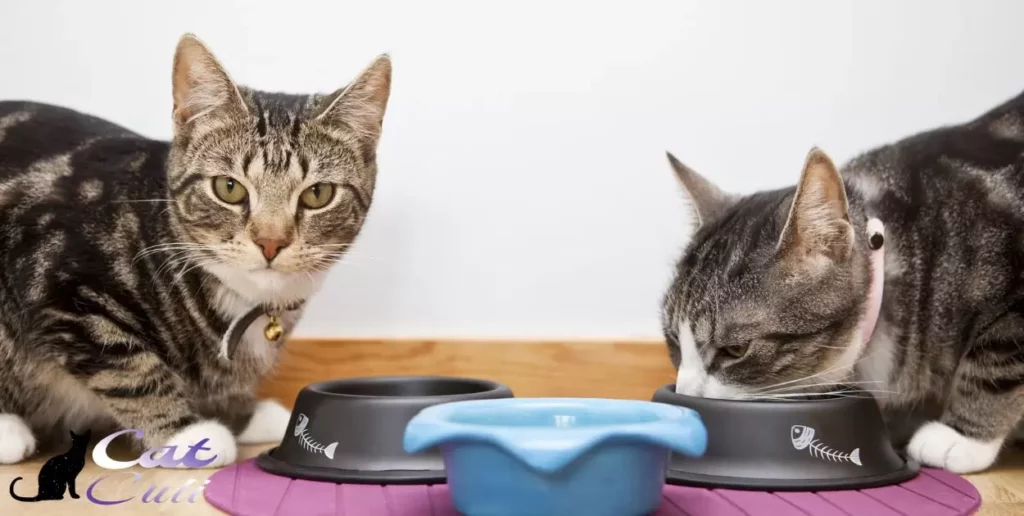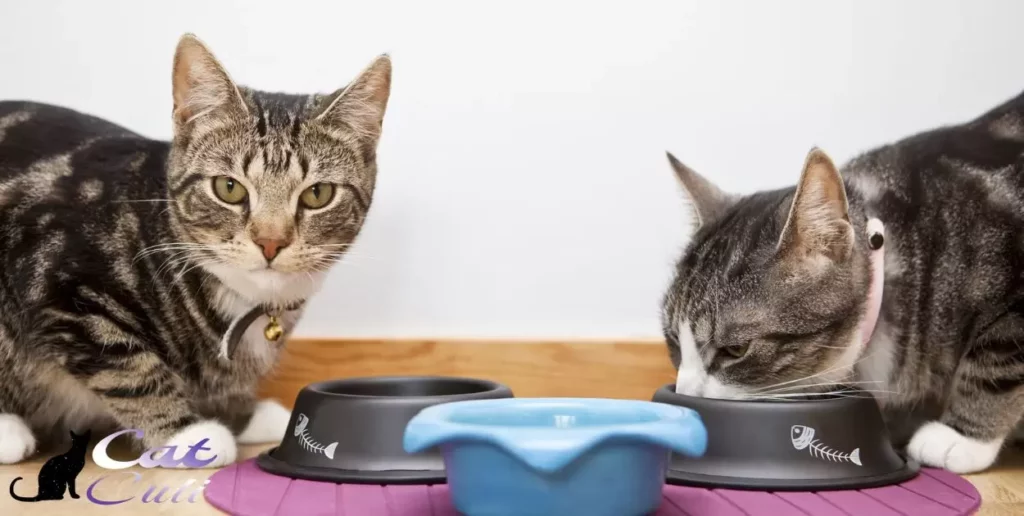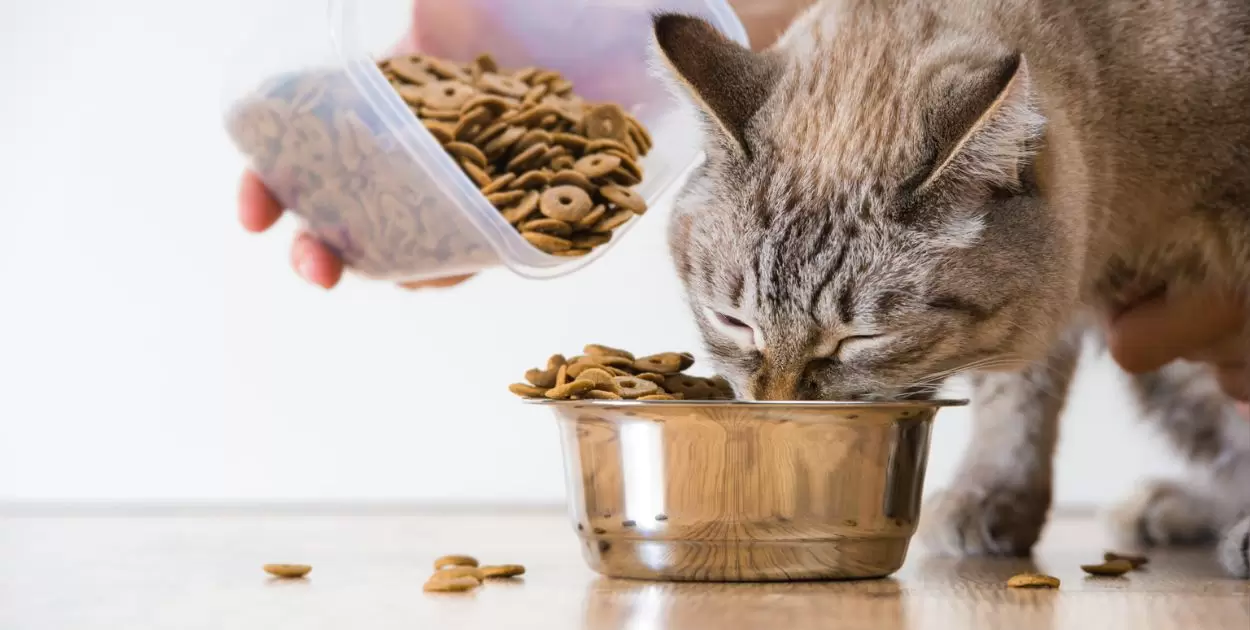Cats can become bored with their food if they eat the same thing daily. Variety in their diet keeps them interested and prevents food fatigue. Introducing new flavours or rotating different brands can help maintain their appetite and overall health.
Are you stuck in a rut serving the same meals to your furry feline? Ever wondered, Do cats get tired of the same food? Discover how to keep your cat’s meals exciting and their tails wagging with simple tips to add variety to their diet.
Cats, much like us, can grow weary of a repetitive diet. Offering a rotation of flavours and textures can keep them engaged and prevent food boredom. Stick around to explore how you can introduce diversity into your cat’s meals, ensuring they stay enthusiastic and healthy in their eating habits.
Factors Influencing Cat Food Preferences
Several factors influence a cat’s food preferences. Taste and smell play a significant role cats may prefer certain flavours or textures over others. Early experiences and social learning contribute; cats may develop preferences based on what they were introduced to during kittenhood or what they observe other cats eating.
Environmental factors like stress or changes in routine can also impact their appetite and what they choose to eat. Understanding these influences helps in catering to your cat’s preferences and ensuring they enjoy their meals.
Health and nutritional needs shape a cat’s food choices. Cats might prefer food that meets their specific dietary requirements and health issues can alter their taste preferences. It’s essential to consider these factors when selecting their meals, ensuring they not only enjoy their food but also receive the necessary nutrients for a healthy and happy life.
The Importance of Variety in Cat Diets
| Importance of Variety in Cat Diets |
| Prevents Food Boredom |
| Cats can get tired of the same food, leading to decreased appetite. Offering a variety of flavours and textures keeps them interested in mealtime. |
| Balanced Nutrition |
| Different foods provide diverse nutrients. Rotation ensures cats receive a wide range of vitamins, minerals, and proteins essential for their health. |
| Avoids Nutritional Deficiencies |
| Limited diets may lack certain nutrients. Introducing variety helps prevent deficiencies and supports overall well-being. |
| Supports Digestive Health |
| A diverse diet can aid in better digestion. Mixing up meals may reduce the likelihood of digestive issues in cats. |
Understanding Feline Nutritional Needs
Understanding feline nutritional needs offers several benefits for cat owners:
- Health Maintenance: Meeting specific dietary needs helps maintain optimal health, reducing the risk of illnesses and promoting a longer, happier life for your cat.
- Weight Management: Proper nutrition aids in weight control, preventing obesity or undernourishment, ensuring your cat stays at a healthy weight.
- Improved Energy Levels: Meeting nutritional requirements ensures your cat has the energy needed for play, exploration, and maintaining an active lifestyle.
- Healthy Skin and Coat: The right nutrients contribute to a shiny coat and healthy skin, reducing shedding and potential skin issues.
- Strong Immune System: Proper nutrition supports a robust immune system helping your cat fight off infections and illnesses more effectively.
- Reduced Veterinary Visits: Meeting nutritional needs decreases the likelihood of dietary-related health issues, potentially reducing the number of vet visits.
- Better Digestive Health: Properly balanced nutrition supports digestive health, reducing the risk of gastrointestinal problems and improving nutrient absorption.
The Role of Smell in Cat Food Choices
A cat’s sense of smell plays a crucial role in their food preferences. With an incredibly keen olfactory system, cats rely on scent to determine the palatability of their food. Strong aromas often entice them, making foods with rich meaty scents particularly appealing.
Understanding this reliance on smell can help in selecting foods that align with their preferences, ensuring they enjoy and consume their meals happily. Moreover, the smell of food can impact a cat’s appetite.
If a meal lacks an enticing aroma even if it’s nutritionally balanced a cat might show disinterest. Ensuring that their food emits appealing odours can encourage them to eat well, maintaining their health and overall well-being.
Signs of Cat Food Boredom
Signs of cat food boredom often manifest in subtle yet noticeable ways. Your feline might display a lack of interest during mealtime, leaving food uneaten or nibbling less than usual. Behavioural changes like excessive meowing or searching for food elsewhere could also signal their discontent with the same meals.
Watch out for telltale signs such as a reluctance to approach their bowl or an increased desire to sample human food. Changes in coat quality or a decrease in energy levels might indicate a nutritional gap stemming from meal monotony. Understanding these signs can help you address your cat’s dietary needs and introduce variety to their meals for a happier, more satisfied pet.
Behavioural Changes Due to Monotonous Diets
Certainly, here’s a simple table outlining the potential behavioural changes in cats due to monotonous diets:
| Behavioural Changes Due to Monotonous Diets in Cats |
| Decreased Appetite |
| Selective Eating (picking at food or refusing it) |
| Increased Vocalization |
| Weight Loss or Gain (depending on individual cat) |
| Boredom or Disinterest in Food |
| Begging for Human Food |
| Digestive Issues (vomiting, diarrhoea) |
| Agitation or Irritability |
These behavioural shifts can often signal dissatisfaction or nutritional imbalance in a cat’s diet due to monotonous feeding routines.
Consequences of Prolonged Same-Food Feeding
- Nutritional Deficiencies: Prolonged feeding of the same food might lead to deficiencies in essential nutrients vital for your cat’s health.
- Boredom and Appetite Loss: Cats can become disinterested and lose their appetite due to monotony in their meals, impacting their overall health.
- Digestive Issues: Limited food variety can trigger digestive problems like constipation or diarrhoea in some cats.
- Allergies and Sensitivities: Over time, cats might develop sensitivities or allergies to ingredients present in their regular food.
- Weight Management Challenges: Routine feeding might contribute to weight issues either weight gain or loss due to lack of varied nutrients.
- Behavioural Changes: Cats may exhibit behavioural changes, such as food aggression or refusing to eat, stemming from food monotony.
- Health Complications: Long-term feeding of the same food might lead to various health complications, impacting their overall well-being.
Strategies to Combat Cat Food Fatigue

Combatting cat food fatigue involves a few simple yet effective strategies. One way is by rotating their meals, introducing different flavours and textures to keep their interest piqued. Another tactic is gradually transitioning between brands or mixing various foods to offer a diverse palate.
By incorporating these strategies, you can ensure your feline friend stays excited about mealtime, maintaining their health and appetite. Experimenting with these approaches can turn their dining experience into a delightful adventure, keeping them happy and satisfied.
Safely Transitioning Cat Diets
When transitioning your cat’s diet, gradual changes are key to prevent digestive upset. Start by mixing a small amount of the new food into their current one, gradually increasing the proportion over a week or two. This slow transition allows your cat’s digestive system to adapt to the new food without causing any tummy troubles.
Monitoring your cat’s behavior and stool during this transition period is crucial, especially when introducing a new element like Chicken Meal in cat food. Keep an eye out for any signs of discomfort or digestive issues. Always consult your veterinarian for guidance specific to your cat’s needs when making dietary changes, ensuring a smooth and safe transition for your feline friend.
Recognizing and Managing Cat Food Allergies
Cat food allergies can manifest in various ways, from skin irritations to digestive issues. Recognizing these allergies involves observing symptoms like itching, vomiting, or diarrhoea after eating specific foods.
Managing them typically involves a process of elimination, gradually changing their diet to identify and eliminate the allergen, often with the guidance of a veterinarian. Understanding your cat’s sensitivities can lead to a tailored diet that keeps them healthy and allergy-free.
Managing cat food allergies requires patience and diligence. Once identified, eliminating the trigger from your cat’s diet is crucial. This often involves switching to hypoallergenic or limited ingredient diets and avoiding common allergens like certain proteins or grains.
Working closely with your vet to create a suitable meal plan can alleviate discomfort and ensure your feline friend thrives without the adverse effects of food allergies.
Homemade vs. Commercial Cat Food Considerations
Certainly, here’s a simple table comparing Homemade and Commercial Cat Food Considerations:
| Considerations | Homemade Cat Food | Commercial Cat Food |
| Ingredients | Control over quality and selection of ingredients | Pre-formulated, varying ingredient quality |
| Nutritional Balance | Need to ensure a balanced diet with proper nutrients | Usually formulated to meet nutritional standards |
| Cost | Can be cost-effective if sourcing ingredients smartly | May vary in price depending on brand and quality |
| Preparation Time | Requires time for sourcing, preparation, and storage | Convenient, ready-to-serve options |
| Quality Control | Direct control over cooking methods and freshness | Relies on manufacturer quality control |
| Shelf Life | Shorter shelf life, may require more frequent preparation | Longer shelf life, convenient storage |
Considerations such as ingredients, nutritional balance, cost, preparation time, quality control, and shelf life differ between homemade and commercial cat food, each having its own set of advantages and considerations for cat owners to evaluate.
Consulting a Veterinarian for Dietary Advice
- Tailored Guidance: Veterinarians offer personalised advice based on your cat’s specific health needs and dietary requirements.
- Health Monitoring: Regular consultations ensure your cat’s diet aligns with their health, preventing issues and promoting overall well-being.
- Expertise in Nutrition: Vets specialise in animal nutrition, providing in-depth knowledge on balanced diets and suitable food choices.
- Prevention of Health Problems: Proper dietary advice can prevent potential health issues like obesity, allergies, or digestive problems.
- Recommendation of Specialised Diets: Vets can suggest specialised diets for cats with medical conditions or specific nutritional needs.
- Weight Management: Veterinarians offer guidance on portion control and weight management tailored to your cat’s individual needs.
- Continuous Support: They provide ongoing support and adjustments to dietary plans as your cat’s health or nutritional requirements change.
Enhancing Cat Mealtime Experience

Enhancing your cat’s mealtime experience involves more than just serving food—it’s about creating an environment that engages their senses. Choosing high-quality cat food that aligns with their nutritional needs is essential. Consider puzzle feeders or interactive toys that dispense food, making meals a stimulating and playful experience.
Introducing variety in their diet can also elevate their mealtime enjoyment. Experiment with different flavours and textures or incorporate occasional treats to keep their interest piqued. Remember, mealtime isn’t just about sustenance for your feline friend; it’s an opportunity for enrichment and bonding.
Innovations in Cat Food Products
Recent advancements in cat food have brought about exciting innovations in the market. From specialised diets catering to specific health needs like weight management or sensitive stomachs to formulations designed to mimic a cat’s natural prey the options have expanded significantly.
There’s a surge in cat food products focusing on sustainability and eco-friendliness. Companies are prioritising ethically sourced ingredients, using recyclable packaging, and even exploring alternative protein sources like insect-based or plant-based options.
Addressing Behavioral Issues Linked to Diet
| Behavioural Issue | Dietary Solution |
| Overeating | Implement portion control and scheduled feeding times |
| Aggression | Consider a diet with calming ingredients |
| Anxiety | Offer food puzzles or slow feeder bowls |
| Lethargy | Ensure a balanced diet with adequate nutrients |
| Excessive Meowing | Evaluate meal timing and consistency |
Dispelling Cat Food Myths
When it comes to cat food, myths abound, creating confusion for pet owners. Understanding these myths is crucial for ensuring your feline friend gets the best nutrition. One common misconception is that all dry food is bad for cats’ health.
Another prevalent myth is that cats should only eat fish-based diets. While fish can be a tasty option, relying solely on it might deprive cats of essential nutrients. A balanced diet featuring various protein sources is key to their overall health.
Real-Life Case Studies on Cat Food Preferences
- Diverse Palates: Real-life case studies showcase the variety of tastes among cats emphasising the importance of offering diverse cat food options.
- Health Insights: Studying preferences reveals correlations between specific food choices and a cat’s overall health aiding in tailored diet plans.
- Behavioural Understanding: Observing preferences helps decode a cat’s eating habits, providing insights into their behaviour and preferences.
- Dietary Adjustments: Case studies enable personalised adjustments ensuring cats receive nutrition they prefer and need.
- Allergy Identification: Through case studies, specific food allergies or intolerances in cats can be identified, guiding owners toward suitable alternatives.
- Feeding Strategies: Learning from these studies aids in developing effective feeding strategies to maintain a cat’s interest in their food.
- Improving Food Formulations: Real-life cases contribute to improving cat food formulations leading to better products that cater to feline preferences and health needs.
Looking Ahead: Future Trends in Cat Nutrition
Certainly! Here’s a simple table outlining future trends in cat food nutrition:
| Future Trends in Cat Nutrition |
| Personalised Diets – Tailored nutrition plans based on a cat’s individual needs and health conditions. |
| Functional Ingredients – Increased use of functional ingredients like probiotics, superfoods, and supplements for specific health benefits. |
| Sustainable Sourcing – Emphasis on eco-friendly, sustainably sourced ingredients and packaging. |
| Novel Protein Sources – Exploration of alternative protein sources such as insects, plant-based proteins, and novel animal proteins. |
| Technology Integration – Advancements in technology for better monitoring of a cat’s nutritional intake and health. |
| Customised Feeding Solutions – Automated feeders and smart devices for customised feeding schedules and portion control. |
| Nutrigenomics – Understanding how nutrition influences a cat’s genetic makeup for personalised dietary recommendations. |
| 8. Transparency & Consumer Education – Increased transparency in labelling and efforts to educate consumers about reading pet food labels accurately. |
These trends reflect the evolving landscape of cat nutrition, focusing on health, sustainability, personalization, and technology to meet the needs of feline companions in the future.
Recap and Empowering Cat Owners
Understanding cat food myths is crucial for cat owners. Recap the key misconceptions about feline nutrition to empower owners to make informed choices. By debunking these myths, cat lovers can confidently provide their pets with balanced and healthy diets, ensuring their cats live happy, nourished lives.
Frequently Asking Question ( FAQS )
Do cats lose interest in their food?
Understanding cat behaviour around food is crucial. Keeping their meals varied can prevent disinterest and maintain their appetite.
Is it OK to feed cats the same food everyday?
Feeding your cat the same food every day is generally okay, but introducing variety can help prevent dietary boredom and ensure they get a range of nutrients.
How do I know if my cat is eating enough?
Monitoring your cat’s weight, energy levels, and portion sizes can help gauge if they’re eating adequately and maintaining a healthy diet.
Is my cat hungry or just begging?
Distinguishing between genuine hunger and mere begging behavior in cats can be challenging but observing their meal schedule and body language can offer clues.
What is the best time to feed cats?
The best time to feed cats is on a consistent schedule, aligning with their natural instincts for multiple small meals throughout the day.
Conclusion
Cats, like us, can grow tired of repetitive meals. It’s essential to keep their diet varied to maintain their interest and prevent mealtime monotony.
By introducing different flavors and textures or rotating their food cat owners can ensure their furry friends remain enthusiastic eaters, promoting their overall health and happiness. Remember a little variety goes a long way in keeping your cat content and satisfied with their meals.








